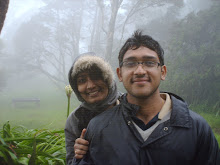A document that I prepared as a part of the PGSEM that held me in good stead. Hope this helps someone. Note that the figures are till 2008 types - might have to be revised in a couple of years.
The numbers and the information is predominantly from wikipedia itself.
-------------------------------------------
The format is as follows:
1. Indian Demographics
2. Indian Economy
3. Abbreviations
4. Karnataka, Maharashtra and Indian government.
5. Current Affairs
a) Sub prime loan crisis.
b) Indian GDP
c) Terrorism etc.
Sidvish
Indian Demographics
1. Total population: 1.16 billion
a. Population Growth Rage: 1.6%
i. Rural Pop: 71%
ii. Urban Pop: 29%
b. Life expectancy: 70 years
2. Age Distribution:
a. 0-14: 31%
b. 15-60: 64%
c. > 60%: 5%
3. Literacy Rate: 80%
4. Religion:
a. Hindus: 80%
b. Muslims: 13.5%
5. Languages:
a. Hindi: 41%
b. Bengali: 8%
c. Telegu/Marathi: 7%
6. % under poverty line: 28%
7. Unemployment Rate: 8%
Indian Economy
1. 12th largest by market rate/4th largest by PPP
2. GDP: 3.3 trillion (PPP)
3. growth: 7.3% (2008)
4. Export: 175 Bln – 1.2% of the world trade.
5. Export Partners:
a. USA: 15%
b. China: 8.5%
6. Employment Breakup
a. Agriculture: 60%
b. Services: 28%
c. Industrial Sector: 12%
7. Output
a. Agriculture: 17% of GDP
b. Services: 28% of GDP
i. Business services 1/3rd
c. Industry: 54% of GDP
8. Economic Inequality:
a. GINI coefficient: 0.4 – 0.44
b. 80% population below 2$/day (PPP)
9. Economic liberalization in 1991
a. license raj before that.
10. Indian industries: 5% of the world’s CO2 emissions
11. FDI: 2% of GDP – 19.5 bln$
12. India: 120 in Ease of doing Business
13. 11th 5 year plan going on since 2007
Abbreviations
1. PPP: Purchasing Power Parity
2. FDI: Foreign Direct Investment
a. Foreign direct investment (FDI) is a measure of foreign ownership of productive assets, such as factories, mines and land. Increasing foreign investment can be used as one measure of growing economic globalization.
3. FII:
4. RTI: Right to Information Act
5.
Karnataka Government
2004 state election
The last elections in Karnataka held in 2004 led to extremely unusual results. For one, no party had enough seats to form a government on its own. Out of a total of 224 seats, the BJP won 79, the Congres 65 and the JD (Secular) 58. The only possibility was a coalition government and the two largest parties were politically not inclined to form a coalition. JD(S) President and former prime minister Deve Gowda decided to partner with the Congress to form a government just to keep the BJP out of the government. The coalition headed by chief minister N Dharam Singh (Congress) and Deputy chief minister Siddharamiah (of JDS) lasted till 2006. Deve Gowda's son HD Kumaraswamy, also of the JDS, brought in a new twist when he garnered support of 46 other ministers and withdrew support from the Congress. Kumaraswamy struck a deal with the opposition party, the right wing BJP, to form an alternate government. The new coalition had HD Kumaraswamy as the Chief Minister and B. S. Yeddyurappa of the BJP as deputy chief minister. Before forming the government, the two parties had entered into an informal power sharing agreement. They would enjoy chief ministership for a period of 20 months each (which would cover the time left for the next elections). This has created a unique situation where a government has been headed by three different political parties with no elections between them.
2008 state election
In 2007, a sudden dispute occurred between HD Kumaraswamy and Yeddyurappa over the abdication of powers which threw the state into emergency and hence under direct Presidential rule. During the elections on 10, 16 and 22 May, the BJP defeated both the local party as well as the Congress making Yeddyurappa the undisputed chief minister of the state. The BJP nearly achieved a majority, and will be leading a state government by itself for the first time in South Indian political history.[1] Analysts claim that the main reason for the defeat of the Congress was that its promises of development have been severely foiled under the current Indian crises like inflation which has jacked up food prices hence severely affecting drought hit regions of the state.[citation needed] Besides, the Congress also had internal rivalries leading to uncertainty of a particular Congress chief minister, in contrary to BJP's Yeddyurappa who has once been an extremely efficient finance minister.[citation needed]
Indian Government
On 22 May 2004, Manmohan Singh was appointed the Prime Minister of India following the victory of the INC & the left front in the 2004 Lok Sabha election. The UPA now rules India without the support of the left front. Previously, Atal Bihari Vajpayee had taken office in October 1999 after a general election in which a BJP-led coalition of 13 parties called the National Democratic Alliance emerged with a majority.
Tuesday, April 14, 2009
Subscribe to:
Post Comments (Atom)

No comments:
Post a Comment